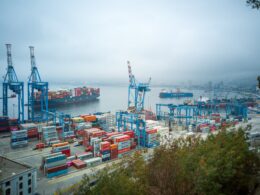Given both the scope and increasing importance of Transport Operators’ compliance requirements, finding a more effective way to manage current processes is becoming a business imperative. From the lengthy manual process of downloading and retrieving tachograph data, to the inability to identify key operational issues due to a lack of data visibility, it’s clear that there is an untapped opportunity to both address the compliance overhead and unlock additional value.
Automated digital technology that enables a joined-up approach to compliance data can transform efficiency. Andrew Tavener, Head of Marketing, Descartes UK, explains how transport operators can remove the day to day burden, and focus on value-add activities, identifying and addressing potential issues before they arise. Those organisations that take a proactive approach to their tachograph data will be best placed to reap the rewards of competitive differentiation.
Current inefficiencies
In recent years, there has been increased adopted in the deployment of digital solutions in transport operations. For example telematics data combined with intelligent algorithms has enabled operators to achieve optimised routes and scheduling of deliveries. Despite this, many transport managers remain burdened by an incredibly manual compliance process. Manual downloads of tachograph data – every 90 days or sooner for vehicle unit (VU) data and 28 days or sooner for driver card data can be time consuming, but failure to download and use the data effectively to run a compliant operation could ruin a business.
There is no doubt the compliance model has room for improvement when you consider just how unproductive it is for operators to be spending 20-30 minutes per vehicle every week just manually downloading tachograph data – not least given the pressure on driver resources. Automating the download process for driver and vehicle unit data not only saves time but can also enable a smarter compliance management approach by unlocking insight in the digital data that is made available.
Reducing risks with data
Typically, compliance data collected will not utilised to its full potential if it is restricted to the remit of a Transport Manager who may only use it to cross reference vehicle and driver data to resolve unaccounted distance or brought out in the event of an incident that needs verification. But this data can be leveraged to achieve so much more; by combining all the available data points – from digital tachograph analysis and reporting, driving licence and driver CPC verification with the DVLA plus digital driver vehicle safety checks, there’s an opportunity to enhance both compliance and operational processes.
A remote, automated solution using telematics to download tachograph and driver card data every day the vehicle is used, combined with a mobile app to support and enforce manual vehicle safety checks, provides a single source of compliance data that allows organisations to move from reactive to proactive management by exception. For example, automated processes for analysing vehicle and driver tachograph data ensures any unaccounted distance is immediately flagged to the Transport Manager. This ability to quickly identify and remedy such issues is far more effective than the current model of reactively addressing a problem that has been occurring for up to three months. A proactive, exception led approach can also be applied to vehicle safety checks – Transport Managers can easily see if the expected number, location and duration of vehicle checks, has not been recorded and the operator has an almost real-time picture of roadworthiness of the fleet and availability of drivers to maximise operational efficiency and meet customer demands.
Smarter approach
Using a digital approach to compliance management also provides the tools needed to routinely check drivers’ licenses, crucial when you consider nine out of ten drivers admit they wouldn’t always inform their employer if they incurred penalty points. The business risk associated with potentially invalidated insurance or reputational damage, not to mention unanticipated driver shortfall is significant, yet can readily be mitigated through automation.
With a smart approach to compliance management, operators can ensure drivers’ licenses are routinely and automatically checked to ensure penalty point information is up to date. That being said, the true value comes from applying the data to focus attention where it is most needed. Setting up a risk profile for each driver and concentrating on those who pose the biggest threat or are at most risk of being banned, through more frequent monitoring for example, allows transport operators to retain essential control.
Furthermore, the data can also highlight key trends in driver activity, such as a sudden spike in drivers’ hours infringements or speeding penalties which might suggest drivers are not receiving the correct time allowance for deliveries. Again, this allows for a proactive management approach before escalation.
Conclusion
Adopting a digital approach to manage transport compliance is increasingly essential when it comes to adding operational efficiency to a business. However, extending the use of telematics to remotely transmit tachograph and driver card data not only saves necessary time and resource, it is the ability to focus on the exceptions, rather than the compliant operations, that truly transforms the burden and enables businesses to drive additional value from this compliance data.













